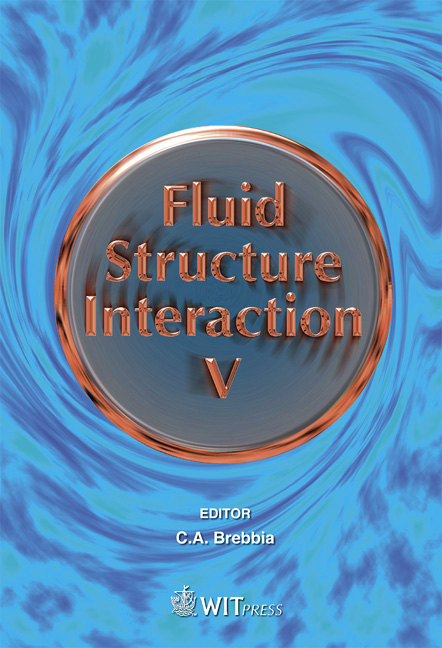Aeroelastic Analysis Of Long-span Bridges Using Time Domain Methods
Price
Free (open access)
Transaction
Volume
105
Pages
11
Page Range
107 - 117
Published
2009
Size
745 kb
Paper DOI
10.2495/FSI090101
Copyright
WIT Press
Author(s)
J. Á. Jurado, A. León, S. Hernández & F. Nieto
Abstract
The current calculation power of computers permits the aeroelastic analysis of long-span bridges using time domain methods. These methods solve the differential equations set for the dynamic analysis by means of step by step integration, taking into account the fluid structure interaction of the wind aeroelastic phenomena. Working with time domain methods has advantages over more standard frequency domain methods. It is possible to more accurately study non-stationary periods associated with the initiation of the aeroelastic instabilities, and nonlinearities can also be analyzed more easily. The main difficulty with time domain methods is the modelling of wind forces, usually defined as frequency functions. The above-mentioned drawback is solved by using the so-called indicial functions that depend on time and they must be obtained from the classical flutter derivatives, which are functions of the frequency. A recent method, named band superposition, has been developed. The new concept is the decomposition of the wind forces in different frequency ranges, analyzing the forces of the lowest frequency band as quasi-steady, and the higher frequency bands with their classical expressions in terms of frequency. To analyze the low-frequency wind loads as quasi-steady is appropriate because the wind flow fits to the deck geometry for that case. The total response consists of the sum of the responses for each frequency band. This paper explains and compares all these methods and shows examples. Keywords: aeroelasticity, long-span bridges, time domain analysis, flutter, buffeting.
Keywords
aeroelasticity, long-span bridges, time domain analysis, flutter, buffeting.





